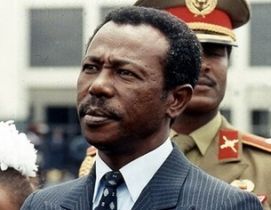Sudan’s unity option based on strategic advice from Ethiopia in 1983 – MP
September 8, 2010 (JUBA) – A member of the Southern Sudan Legislative Assembly and veteran member of the ruling Sudan People’s Liberation Movement (SPLM) has disclosed that the of vision for Sudan’s unity was based on strategic advice taken from the former Ethiopian leadership in 1983.

Madut explained during his live TV interview that Achuek got it wrong because the choice to struggle for the unity of Sudan was strategic – in order to secure support from the Ethiopian government at the time.
He further explained that those that first rush to attain the support of the Ethiopian government was led by late the Akuot Atem . He failed to win the acceptance of the Ethiopian socialist regime because their drafted political manifesto spoke of struggle for independence of the South – a position rejected by the Ethiopian regime which was also fighting against its own separatists in Eritrea.
Arop, a veteran writer on the subject said the SPLM/A leadership at the time of the movement’s inception in 1983 was advised by the Ethiopian former Minister of Defense not to take a pro-separation stance because his leader, the former Ethiopian President, Mengistu Haile Mariam, was anti-separation and would refuse to support any movement fighting for the independence of the South. He said that successive Khartoum governments have refused to allow the envisioned unity of the country.
In an earlier meeting with the press, the SPLM Secretary for Political Mobilization, Antipas Nyok, said the SPLM/A was pro-unity during the struggle and blamed the present National Congress Party (NCP) for nurturing separatists.
Nyok said the SPLM/A was fighting against separatists in the battlefields of the South, who then became allies to the NCP.
He further explained that the NCP supported them and allowed them to maintain the names of their respective political and military wings that made their intentions appear to be separatist, such as the former South Sudan Independence Movement (SSIM) and South Sudan Defense Forces (SSDF).
The head of the ruling party’s political mobilization desk, who also expressed his support for separation, saying it was the NCP that worked for separation in the past and should not now blame it on the SPLM. “If the NCP helped in organizing those forces [SSIM and SSDF] in the name of South Sudan independence, then why would it now refuse to let the South go?” he asked.
On 9 January 2011 the people of Southern Sudan are scheduled to choose between confirming the current unity of Sudan or opting to create an independent state. While the dominant northern NCP leadership has made it clear that it prefers the unity of the country, its counter-part in the South, the SPLM, has not yet come out with its official position in support of either options.
Arop said since the NCP has openly chosen to support the option of unity instead of leaving it to the voters to decide, as stipulated in the 2005 peace deal, the SPLM should reciprocally declare its support for separation of the South.
(ST)
